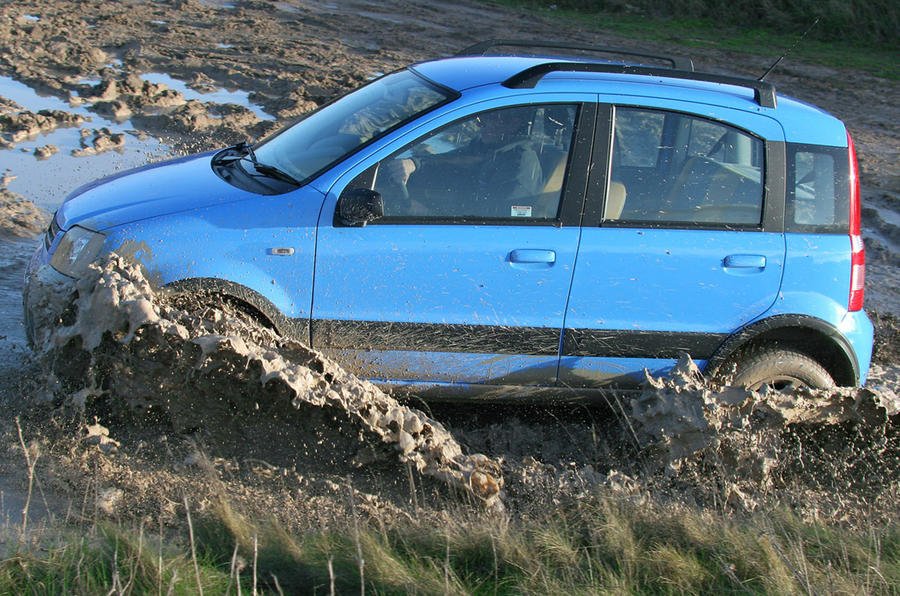You would have to have a pretty stony demeanour not to feel at least some affection for the second-generation Fiat Panda. Representing a huge leap forwards in terms of styling, technology and drivability over its iconic forebear (which, if you can believe it, was still being made right up until 2003), the Panda was, in its various guises, an off-roader, a city runaround and a hot hatch.
More importantly, the whole model range was and remains wonderfully accessible – and not just in terms of the seating. Just £500 these days gets you into a 2005 base-spec car with the naturally aspirated 53bhp 1.1-litre engine, or you could splurge £2000 on the fan-favourite 4x4 model.
Even the cleanest examples of the 100HP hot hatch, which offers more dynamic thrills than you could think possible in a car of this size and stature, will set you back less than £5000, which, given its rarity and unique market positioning, is something of a steal.
Of course, budget motoring certainly isn't without its perils, and even the most utilitarian variants of the Panda must be approached with some caution. Don't let that scare you off, though, because this is no storm in a teacup when it comes to servicing and maintenance. The Mk3 Panda did wonders for Fiat's flailing reputation (not to mention its troubled finances), and its ongoing popularity is testament to how well it weathers the years.
The most commonly occurring faults are relatively minor, stemming from the Panda's affordable mobility billing, and are unlikely to bother the casual buyer. Paint chips, loose trim panels, electrical niggles and dodgy tracking are usually top of the to-do list with a second-hander, but the canniest customers will also look for signs of head gasket failure, water ingress and accident damage (particularly on the 4x4 and 100HP).
You might not have considered the Panda if you consistently lug large loads around, but its 200-litre boot offers more luggage space than a contemporary Mini hatchback, and you get an impressive 861 litres with the rear seats folded down, meaning you could feasibly carry a tumble-drier or mountain bike, depending on how adventurous you are. You really can do it all in a Panda.
You can expect to get around 50mpg from the eight-valve, front-wheel-drive runabouts and a good deal more than that with the 1.3-litre Multijet diesel, which is more agreeable to live with at motorway speeds. The 4x4's heftier underpinnings and raised ride height bring a slight efficiency penalty, as you would expect, while the more highly strung 100HP's 16-valve 1.4-litre unit can muster an acceptable 44mpg in normal driving.
Enthusiasts, however, will no doubt be more excited by the 100HP's 9.5sec 0-62mph time – which, in a car like this, feels much faster than it sounds – and the 4x4's nimbleness when the going gets tough.
Daryll Duiker: "I still think that Abarth should have taken the 100HP to make a really fast hot hatch. A 1.4-litre turbo engine would have been awesome, as the atmo unit it has now is fun but, in my opinion, not powerful enough. That's my dislike, but my likes include traffic-light sprints, the sound (I've got an Akrapovic exhaust with a custom backbox) and the go-kart handling. The six-speed gearbox usually needs an overhaul after 100,000 miles, but there's nothing else to worry about."
Buyer beware...
■ Engine: Fully Integrated Robotised Engine (Fire) petrols – from the entry 1.1-litre unit up to the 16V 1.4-litre range-topper – are frugal, easy to maintain and punchier than you might think. Head gasket failure is a possibility across the range, so keep an eye out for milky oil or white exhaust smoke. The timing belt should be replaced every 36,000 miles, especially on post-2010 'interference'-engined cars, which were given variable valve timing to meet Euro 5 emissions standards.
■ Gearbox: Shifting woes are more frequently attributed to the hydraulic clutch than the transmission itself. Adjustment is simple enough, and you should try bleeding the system before replacing the friction plate. The 4x4 and 100HP might crunch when shifting up into third; this can sometimes be remedied with new linkages but could mean the synchro is worn out. A replacement 'box can be found for around £400.
■ Bodywork: Fit and finish definitely isn't a strong suit for the Panda. So check that the thinly applied paint hasn't been too chipped by stones and that the light cluster seals haven't let water into the housing. Also, drainage holes at the bottom of the windscreen can clog and let water into the footwells.
■ Suspension: The 100HP's ride is firmer than the standard Panda's, while the 4x4 rolls significantly more in corners. The hot hatch is also known for its propensity to go out of alignment, causing tyres to wear irregularly, so get this sorted by a specialist immediately after purchase.

